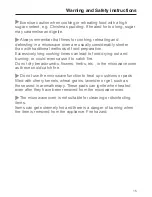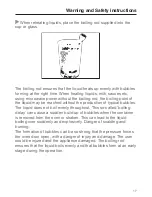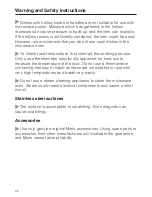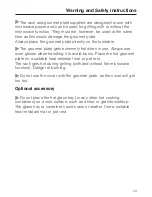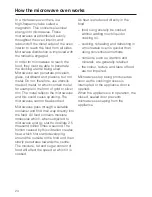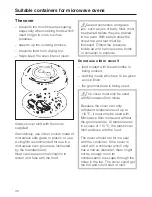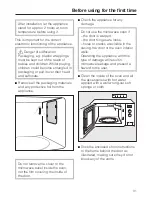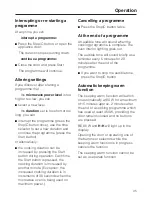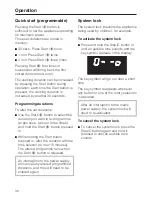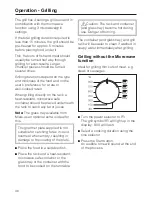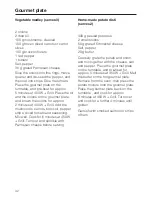
Exceptions:
– Ready-meals in aluminium foil
dishes.
These can be defrosted and reheated
in the microwave oven, if
recommended by the manufacturer.
Important: Remove the lid and make
sure the foil dish is at least 2 cm from
the oven walls at all times. As food is
only heated from the top, it is better to
remove the food from the aluminium foil
container and transfer it to a dish
suitable for a microwave oven. The heat
distribution will be more even.
Do not place aluminium foil dishes
on the rack in case the dish sparks
or arcs. If sparks occur, transfer
food to a microwave safe container.
– Pieces of aluminium foil
For even defrosting and to avoid
overcooking unevenly shaped cuts of
meat, poultry or fish, small pieces of
aluminium foil may be used to mask
wingtips or other thin parts for the last
few minutes of the programme.
Make sure that the aluminium foil is
at least 2 cm from the oven walls at
all times. It must not touch the walls.
– Metal meat skewers or clamps
These should only be used if they are
very small in comparison to the size of
the cut of meat.
Glassware
Heat-resistant glass or ceramic glass
are ideal for use in the microwave oven.
Crystal glass is unsuitable as it
contains lead which could cause the
glass to crack in the microwave
oven.
Porcelain
Porcelain is a suitable material.
Do not use porcelain with gold or
silver edging or items with hollow
knobs or handles, as insufficient
ventilation may cause pressure.
Earthenware
Decorated earthenware is only suitable
if the decoration is beneath an all-over
glaze.
Earthenware can get very hot and
may crack.
Glazes and colours
Some glazes and colours contain
metals which make them unsuitable
for use in a microwave oven.
Wood
Wooden dishes are not suitable.
Moisture contained in the wood
evaporates when exposed to
microwave energy, causing the
wood to dry and crack.
Suitable containers for microwave ovens
27



